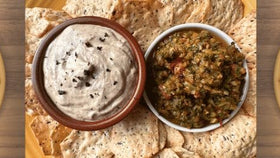Does Saffron Need to be Soaked Before Cooking?
Saffron is a delicate and aromatic spice derived from the Crocus sativus flower, but despite its delicate physical nature, the flavor components within are immensely potent. When used in excess or incorrectly, a dish can quickly become bitter or overpowered. For this reason, many chefs and culinary aficionados swear by soaking the spice in liquid before incorporating it into their dishes. Still, the question arises: is it necessary to soak saffron before cooking?
Is it Necessary to Soak Saffron Before Cooking?
In the simplest of terms, “no, it is not necessary to soak saffron prior to the cooking process”. That said, it is common practice for good reason. Placing raw saffron directly into a dish, in many cases, can lead to uneven disbursement of flavor and color. Cooking is an art, though, and methods of artistry can be interpreted in different ways by different people. For some culinary artists, the extra pop of flavor and color in certain bites might be desirable, though in most situations and for most chefs, it is not.
There are other instances, where soaking the saffron may be an unnecessary step, such as with deeply colored braised dishes. In this situation, there is already so much liquid in the dish, that the soaking and infusion will occur as it cooks. Now, if it is a lightly-colored braise and the goal is to get a consistent color throughout, you may want to grind the saffron first. This brings us to the next question: is soaking saffron the only way to incorporate even flavor and color into dishes? Again, the answer is, “no”. There are two main methods of using saffron in cooking.
Two Methods of Preparing Saffron for Cooking
Soaking Saffron
As previously mentioned, soaking saffron in liquid before cooking is a great method for ensuring both the flavor and color are incorporated evenly throughout the dishes they are applied to. It isn’t as narrowly directive as just throwing threads into water. This method comes with best practices and options.
The process for soaking saffron: In most cases, it is best to use the back of a spoon or a mortar and pestle to crush or grind the saffron before soaking. Once ground, the saffron should be steeped in warm liquid for at least 20 minutes prior to adding to the dish. Basically, any liquid can be used for steeping saffron, as long as it will not alter the dish—milk, water, broth, oil, wine, etc…
Toasting Saffron
Toasting saffron is another method for utilizing it without adding a bitter tone. In fact, some recipes will specifically call for toasted saffron. For this, you'll place the full threads in a hot skillet over medium heat, cooking them for about 2 minutes and stirring or shaking the pan continuously to prevent burning. After toasting, you’ll want to allow the saffron to cool completely before grinding it into a powder. Depending on your recipe, you can either follow up by soaking the saffron in liquid or directly add it to your dish.
Why Is Saffron Soaked or Toasted Before Cooking
Even dispersion of color and flavor isn’t the only reason saffron is prepared before adding to dishes. The compound primarily responsible for the color and flavor of saffron is crocin. When soaked or toasted, the full potential of crocin is unlocked, delivering a more intense sensory experience of saffron’s unique attributes.










Slofoodgroup
Auteur